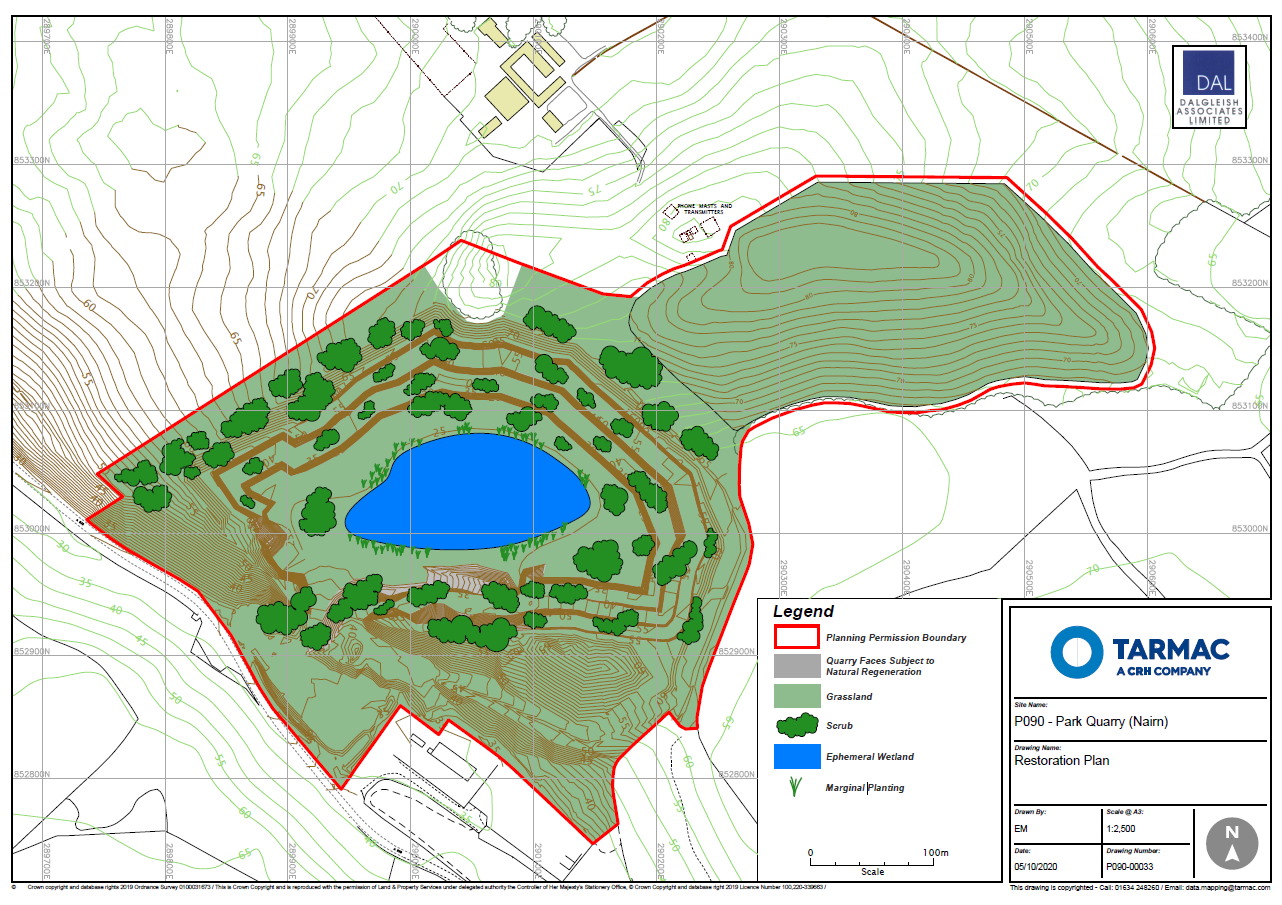Restoration
Park Quarry
As a business, we take our responsibilities towards stewardship of our land, our operations and our community very seriously. This includes sympathetic restoration of our worked-out quarries.

Due to the small footprint of Park Quarry, the potential for progressive restoration is limited, which means that restoration within the new excavation area will begin once operations at the site have largely been completed.
The overlying materials (the superficial deposits and weathered rock removed during the extraction phase) will be spread and landscaped onto the existing agricultural land during the working phase of the quarry, so that it can be quickly returned to agricultural use.
The restoration proposals for the quarry itself involves a mix of bare rock faces, scrub and grassland on the quarry benches and floor to reflect the local landscape and habitats. Natural surface water run-off will accumulate on the quarry floor forming seasonal wetland, which will vary in size depending upon topography, season and rainfall.
Some rock faces will be left bare to weather naturally, and others will have scree slopes created. Drift and quarry spoil/fines (leftover materials) will be backed up against the quarry faces to smooth the transition from rock face to quarry floor. Soil that was stripped as part of the quarry excavation will be laid onto the quarry benches and quarry floor. This soil will then be initially seeded with grasses and then planted with scrub to reflect the local landscape.
Beyond the direct restoration within the quarry itself, all buildings, equipment and plant will be removed, and the site access area reinstated to grassland.
Following restoration, the site will be subject to a five-year aftercare scheme under Tarmac’s stewardship. Tarmac owns the current quarry but leases the extension areas from the owners of Park Farm, so these areas would be handed back after restoration and aftercare is complete.